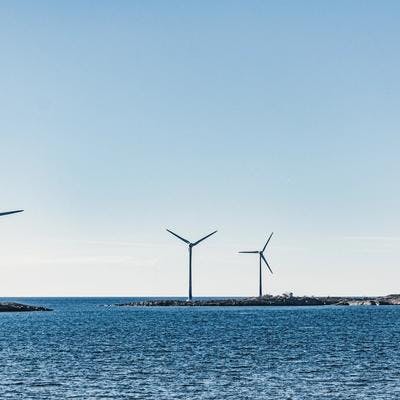
What are International Infrastructure Investments?
International infrastructure investment refers to the process of allocating financial resources into the infrastructure sector of foreign economies. These investments can include, but are not limited to, sectors such as transportation (roads, airports, seaports, railways), utilities (water, electricity, gas), telecommunications, and real estate development.
This form of investment is often long-term, making it a suitable option for investors who are willing to commit their resources over an extended period. It's important to note that investing in international infrastructure can be both direct, such as building a power plant in a foreign country, or indirect, such as investing in an infrastructure fund or through a public-private partnership.
The Role of Infrastructure in a Global Economy
Infrastructure plays a vital role in the global economy. It facilitates trade, promotes economic development, and significantly contributes to the quality of life in any given region. For instance, good transportation infrastructure allows for the efficient movement of goods and services, which is crucial for both local and international trade.
In the context of investment, infrastructure projects in growing economies can offer substantial returns. This is particularly true in emerging markets where infrastructure development is pivotal to economic growth. Investing in these markets can provide investors with a unique opportunity to contribute to, and benefit from, the economic development of these regions. For more information on investing in emerging economies, you can visit our article on investing in emerging economies.
Moreover, infrastructure investments are typically less volatile than other asset classes, such as equities or commodities. This is because the demand for infrastructure (utilities, transportation, etc.) tends to be stable, providing consistent cash flows to investors.
By understanding international infrastructure investment, you're taking the first step towards diversifying your portfolio and potentially unlocking significant returns. However, like all investment opportunities, it's crucial to understand the associated risks and challenges, which we will explore later in the article.
The Potential of International Infrastructure Investment
When looking at the realm of international investment, infrastructure often presents some attractive opportunities. Let's explore the potential benefits associated with investing in international infrastructure.
Economic Growth Potential
Investing in infrastructure internationally can be a significant driver of economic growth. Infrastructure projects often require substantial capital, which leads to job creation and increased demand for materials and services. The completion of these projects also tends to boost economic productivity by improving transportation, communication, and essential services.
For investors, this growth can translate into an attractive return on investment. Infrastructure projects, particularly in emerging markets, often offer higher growth rates compared to mature markets. For more information on the potential of emerging markets, check out our article on investing in emerging economies.
Diversification Benefits
Investing in international infrastructure can also provide significant diversification benefits. It allows you to spread your investments across different geographical regions and sectors, reducing the risk associated with a concentrated portfolio.
By investing in infrastructure projects in different countries, you can take advantage of various economic cycles and growth rates. This can help to reduce the impact of any single market downturn on your overall portfolio. For more on this topic, see our guide on diversifying internationally.
Inflation Protection
Another potential benefit of investing in international infrastructure is inflation protection. Infrastructure investments often have built-in inflation protection as they typically involve long-term contracts where revenues are linked to inflation indexes.
This can make infrastructure investments an attractive option for those looking to protect their portfolio against the eroding effects of inflation. This is especially relevant in today's economic environment, where many countries are experiencing heightened inflation rates.
In conclusion, the potential benefits of investing in international infrastructure include economic growth potential, portfolio diversification, and inflation protection. However, like all investments, it's important to do your due diligence and understand the risks involved. Be sure to consider your investment objectives, risk tolerance, and time horizon before making a decision.
Risks and Challenges in International Infrastructure Investment
While investing in international infrastructure offers potential benefits, it does come with its share of risks and challenges that you need to consider as part of your investment strategy. This section will discuss the political, currency, and regulatory risks associated with international infrastructure investment.
Political Risks
Political instability can pose significant risks to infrastructure investments. Changes in government, civil unrest, corruption, and conflicts can all impact the progress and profitability of infrastructure projects. Political risks can be particularly high in emerging markets, where governance may be less stable. Before investing, you should thoroughly assess the political stability of the country and consider how potential changes could impact your investment. For more insight into investing in emerging markets, visit our guide on emerging markets investing.
Currency Risks
When you're investing in international infrastructure, currency risk is another factor to consider. Fluctuations in exchange rates can impact the value of your investments and the returns you receive. If the currency of the country where you've invested depreciates against your home currency, the value of your investment and any returns may decrease when converted back into your home currency. Therefore, it's important to carefully monitor exchange rates and consider hedging strategies to mitigate this risk. Our article on investing in foreign currencies provides further information on managing currency risks.
Regulatory and Legal Risks
Regulatory and legal risks are also a significant consideration when investing in international infrastructure. Laws and regulations related to infrastructure development can vary significantly from one country to another. This could impact the approval, construction, and operation of infrastructure projects. Furthermore, changes in regulations or legal disputes can lead to delays or additional costs. Therefore, having a clear understanding of the legal and regulatory frameworks in the country of investment is essential.
Each of these risks can pose challenges to international infrastructure investment, but they can also be managed with careful planning and consideration. By understanding these risks and implementing strategies to mitigate them, you can better position your investment for success. For further insights into managing risks in international infrastructure investment, check out our article on international investing strategies.
Key Aspects to Consider for Infrastructure Investment
When you're contemplating investing in international infrastructure, there are several key aspects to consider. These include assessing the infrastructure needs of the region, evaluating the region's economic stability, and understanding the legal and regulatory frameworks in place.
Assessing Infrastructure Needs
Before you invest in infrastructure in a foreign country, it's crucial to assess the infrastructure needs of the area. A thorough analysis of the existing infrastructure, the gaps in service, and the demands of the population will help you understand the potential return on your investment.
For example, a developing country might need investment in basic infrastructure like roads, water supply, and electricity. In contrast, a developed country might require investment in digital infrastructure or renewable energy sources. Understanding these needs can help guide your investment decisions and maximise your potential returns.
Evaluating Economic Stability
The economic stability of the country you're investing in is another important factor to consider. Economic stability can impact the success of your investment. Countries with stable economies are more likely to have a steady return on investment.
Consider factors like the country's GDP growth rate, unemployment rate, inflation rate, and the stability of its currency. Also, consider the country's economic outlook, including potential risks and opportunities. For more insight into these factors, you might find our article on international stock market analysis helpful.
Understanding Legal and Regulatory Frameworks
Finally, you need to understand the legal and regulatory frameworks of the country you're investing in. These can have a significant impact on your infrastructure investment.
Different countries have different laws and regulations regarding foreign investment. Some countries may have restrictions on foreign ownership, while others may have incentives to attract foreign investors. It's crucial to understand these laws and regulations to avoid potential legal complications and to ensure your investment is protected.
Consider seeking advice from legal and financial experts familiar with the country's laws and regulations. This can help you navigate the complexities of international infrastructure investment.
By taking these factors into consideration, you can make informed decisions about investing in international infrastructure. Remember, while there are potential risks associated with international infrastructure investment, there are also many opportunities for significant returns. With careful planning and consideration, you can make investments that contribute to global development and yield financial benefits.
Ways to Invest in International Infrastructure
When considering investing in international infrastructure, there are several routes you can take. Each option offers a different blend of control, risk, and potential returns. Here, we explore three common ways: direct investment, infrastructure funds, and public-private partnerships.
Direct Investment
Direct investment in international infrastructure involves purchasing equity in projects or companies that develop and manage infrastructure assets. This strategy offers the highest level of control, allowing you to make decisions about the project's direction and management. However, it also comes with the highest level of risk, as you bear the full impact of any project failures or delays.
As a direct investor, you also have to navigate the complexities of international business, including understanding different regulatory environments, negotiating contracts, and managing foreign exchange risk. Therefore, this option is generally suitable for sophisticated investors who have the necessary expertise and resources.
Infrastructure Funds
Infrastructure funds pool money from multiple investors to invest in a portfolio of infrastructure projects. These funds can invest globally, providing exposure to a diverse range of infrastructure assets across different countries and sectors. This approach offers a lower risk compared to direct investment, as the impact of any single project failure is spread across multiple investors.
Infrastructure funds can be structured as mutual funds, exchange-traded funds (ETFs), or private equity funds. Each type of fund has its own risk and return profile, as well as liquidity and investment requirements. For more information on international ETFs and mutual funds, please visit our articles on international ETFs and international mutual funds.
Public-Private Partnerships
Public-private partnerships (PPPs) allow private investors to partner with governments to finance, develop, and operate infrastructure projects. These partnerships can offer significant opportunities, particularly in emerging markets where infrastructure needs are great but public resources are limited.
In a PPP, the government typically provides the land and regulatory approvals, while the private partner brings in capital, technical expertise, and operational efficiency. This partnership can reduce the risk for the private investor, as the government often guarantees a minimum return or revenue stream from the project.
However, PPPs also involve unique risks, including the risk of changes in government policy or public sentiment towards the project. Therefore, it's crucial to carefully assess the project's viability and the government's commitment before entering into a PPP.
By considering these options, you can find an investment approach that fits your risk tolerance, investment horizon, and financial goals. As always, it's important to do your due diligence and seek professional advice before investing in international infrastructure.
Managing Risks in International Infrastructure Investment
While investing in international infrastructure presents enormous potential, it doesn't come without its share of challenges. To successfully navigate these risks, you need to adopt effective risk management strategies. Let's explore a few methods to help safeguard your investments.
Diversification Strategies
One of the most effective ways to manage risks in international infrastructure investment is through diversification. By spreading your investment across different countries and sectors, you can mitigate the impact of any single investment performing poorly.
For example, if you invest in infrastructure projects across the globe, any losses incurred in one region due to political instability or economic downturn can be offset by gains in more stable or growing regions. You might consider diversifying across established markets and emerging markets to balance risk and reward. You can learn more about diversification within international investments in our guide to diversifying internationally.
Political Risk Insurance
Political risk insurance can be a valuable tool for managing the risks associated with international infrastructure investment. This form of insurance can protect your investments from losses related to political events such as expropriation, political violence, or currency inconvertibility.
While political risk insurance doesn't eliminate these risks, it can provide financial compensation if they materialise, helping to shield your returns from adverse political events. It's advisable to consult with an insurance professional or financial advisor to understand the specific coverage and terms that best suit your investment strategy.
Partnering with Local Entities
Collaborating with local entities in the host country can be another effective risk management strategy. These entities can offer invaluable insights into the local business environment, regulatory landscape, and cultural nuances.
When you partner with a local entity, you can gain access to their local knowledge and networks, which can help you navigate potential risks and challenges. However, it's important to conduct thorough due diligence on any potential partners to ensure they align with your business ethics and investment goals.
Remember, managing risks in international infrastructure investment doesn't mean avoiding risks altogether. Instead, it involves understanding the potential risks, implementing strategies to mitigate them, and being prepared to respond effectively if they do arise. By doing so, you can enhance the potential of your international investments and contribute to the growth of global infrastructure.




